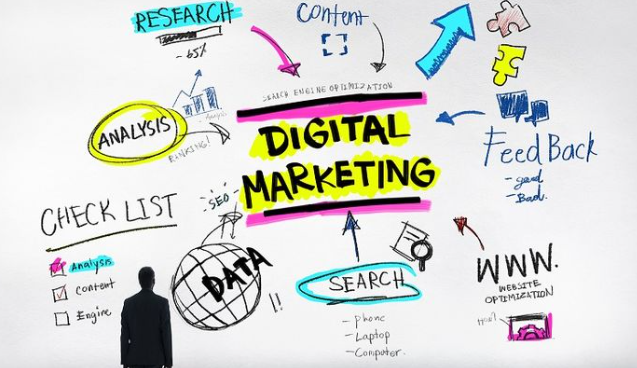It's well known that goals and objectives are essential parts of a business strategy, but they are different. Usually, company goals are broad– long-term plans that provide overall direction. The interesting thing is they outline what the business wants to achieve.
This usually relates to the big picture, like growth or market leadership. On the other hand, objectives measure the steps needed to reach these goals. They are specific actions, usually shorter-term plans, following the S.M.A.R.T. criteria:
- Specific
- Measurable
- Attainable
- Relevant
- Time-based
One thing is for sure: Objectives can be divided into outcome-oriented and process-oriented goals. The noteworthy element is outcome-oriented goals focused on the end result. Plus, Process-oriented goals emphasize the actions required to achieve the goals. Typically implementing effective measurement tactics and tracking progress is crucial. It’s just fascinating how this ensures your objectives align with and support your overall company goals!
Introduction to goals and objectives
It's beyond dispute that the foundation of a successful organization is a comprehensive business strategy. This includes both short-term and long-term plans. Interestingly, formulating specific objectives that adhere to the S.M.A.R.T. criteria is essential. The key takeaway is it helps define a clear path towards your overall goal.

It's crucial to realize that outlined company goals ensure all specific actions align with the desired direction of growth. The significant point is it's essential to implement measurement tactics.
What’s obvious is these enable regular progress tracking towards goal attainment. Generally, to successfully navigate any venture, balance between outcome-oriented and process-oriented goals is key. One thing to note about objectives is it acts as the link between the two.
Understanding goals
It's no secret that establishing a business strategy involves setting company goals. The remarkable aspect is it also involves determining the specific actions required to achieve these objectives.
Commonly, these specific objectives should follow the S.M.A.R.T. criteria, which links both short-term and long-term plans to the overall goal.
The fascinating aspect is developing measurement tactics that allows for progress tracking and makes objectives tangible. There is no doubt that it is essential to differentiate between outcome-oriented and process-oriented goals. Typically, the former focuses on the end result, while the latter prioritizes the steps needed for goal attainment. However both are vital for a comprehensive strategy execution.
Definition of goals
It's beyond dispute that defining goals involves setting criteria that are specific, measurable, attainable, relevant, and time-based (S.M.A.R.T.).
Mostly, goals encompass both short-term actions and long-term plans. The enlightening part is they align daily operations with the company's business strategy.
It's interesting to point out that goals focus on specific objectives, increasingly using measurement tactics. They can be both outcome-oriented and process-oriented. Obviously, the path to goal attainment requires strict monitoring and potential adjustment of specific actions.
Characteristics of effective goals
It’s astounding to find out how effective goals are integral to a successful business strategy! They should be set using the S.M.A.R.T. criteria.
Inarguably, specific objectives should be clear and outline the actions necessary for goal attainment. They should differentiate between short-term and long-term plans. The impressive thing is each should have its own measurement tactics to enable progress tracking.
Examples of goals in business context
It's crucial to be aware that in a business context, company goals are crucial. These may be long-term plans, like expanding into a new market; or short-term plans, like increasing quarterly sales by 10%!
Plus, goals provide a pathway for specific actions the company needs to undertake. The noteworthy element is they also offer a basis for progress tracking. At the same time, it's important to set both outcome-oriented and process-oriented goals.
The critical point is the success of goal attainment is gauged using specific measurement tactics. These tactics address not only the process but also the final outcome. How setting and tracking goals are essential for success in business is!
Understanding objectives
There is no denying that understanding objectives is crucial for forming both short-term and long-term plans. Typically, these criteria ensure objectives are: specific, measurable, achievable, relevant, and time-based.
The remarkable aspect is the process blends outcome-oriented and process-oriented goals. The main elements are as follows:-
- Business strategy formulation
- Objective measurement
- Using specific measurement tactics
Definition of objectives
It's indisputable that the primary aim of defining objectives in a business strategy is to decide on short-term and long-term plans.
The surprising fact is objectives serve as a roadmap to guide a company towards its overall goal. Interestingly, they lay out specific actions and provide a clear method for progress tracking. Objectives are essential in setting compelling company goals and effective measurement tactics. How vital objectives are for achieving goal attainment!
Characteristics of effective objectives
One thing is for certain: Effective objectives are key to achieving company goals. They serve as a foundation for creating a solid business strategy. Generally, they should follow the S.M.A.R.T. criteria to ensure their feasibility.
Moreover, effective objectives can be either outcome-oriented or process-oriented.
One notable thing is they should incorporate objective measures for a clear understanding of success through measurement tactics.
Examples of objectives in business context
It's well known that the fundamental objectives in a business context include setting S.M.A.R.T. goals. It’s just fascinating how these goals guide company decisions and operations!
The key takeaway is these objectives measure progress towards achieving both short-term and long-term plans, helping to adjust business strategy as needed. Employing S.M.A.R.T. criteria, the objectives initiate specific actions to move towards the overall goal. As a consequence, this aids in progress tracking that contributes to the success along with growth of the business.
Distinguishing between goals and objectives
There is no denying that goals and objectives play a pivotal role in business strategy formulation. Company goals are long-term plans that provide directional guidance towards an overall goal. They are generally broad, long-range, and outcome-oriented.
The noteworthy element about these objectives are they short-term plans with specific actions that help achieve the goals. The cool thing about constant progress tracking is it helps assess the success of strategies and adjust them as required.
Key differences
It's beyond dispute that the key differences between short-term and long-term plans lie in their specific objectives and time-based goals.
What’s interesting is short-term plans focus on immediate tasks and specific actions necessary to achieve company goals. The remarkable aspect about long-term plans is they focus on business strategy and overall goals.
Typically, The former often works towards outcome-oriented goals with measurable results whereas the latter is often process-oriented goals designed for goal attainment that aligns with future company objectives.
Another key difference is how objectives are measured; short-term plans may use daily measurement tactics; on the contrary, long-term plans consider annual or multi-year progress tracking.
It’s astonishing how both types of plans offer different perspectives!
Importance of differentiating goals from objectives
It's no secret that differentiating between goals and objectives contributes significantly to the success of a business strategy. What’s notable is company goals represent the overall goal, potentially the long-term plans of what the organization aims to achieve. Consequently, they are often broad and more outcome-oriented goals.

One thing is for sure: objectives measure the specific actions the business will take to achieve these goals. They are often short-term plans, specific objectives, and process-oriented goals. The intriguing part is that objectives adhere to the S.M.A.R.T. criteria and are tied to a time-based goal.
What’s crucial to understand is this distinction allows for accurate progress tracking using measurement tactics. Therefore, it is crucial to understand both in their own light.
How to set goals and objectives effectively
It's interesting to point out that setting effective goals and objectives is central to a successful business strategy. The first step is to define your company goals, being as specific and outcome-oriented as possible.
Next, devise short-term plans and specific actions that will feed into your overall goal. To review progress, it's essential to employ measurement tactics, utilizing progress tracking systems to keep an eye on goal attainment.
Utilizing the SMART framework
It's significant to note that as an integral part of any business strategy, S.M.A.R.T. criteria refer to– Specific, Measurable, Attainable, Relevant, and Time-based goal setting. The impressive thing about this is it helps align company goals by:-
- Defining specific objectives
- Formulation of short-term and long-term plans
- Designing appropriate measurement tactics
One thing is proven: The establishment of appropriate progress tracking systems aids in determining the effectiveness of the implemented plans and outcomes. Notably, both outcome-oriented and process-oriented goals can be successfully achieved through the careful application of specific actions that have been in line with the overall goal.
Aligning goals and objectives with business strategy
It's an undeniable truth that aligning a company's goals and objectives with its business strategy involves S.M.A.R.T. objectives.
The crucial point about this strategic alignment is it allows for the efficient use of company resources along with ensuring all efforts go towards achieving the overall goal. It's a matter of fact that short-term plans should consist of specific actions. The interesting thing is these actions should be supported by measurement tactics. They must also align with long-term plans.
Typically, short-term plans may have process-oriented goals. These goals focus on implementing a course of action. Some goals are outcome-oriented. The obvious thing is these focus on achieving an end result.
Also, how vital progress tracking is! It helps in assessing goal attainment. The remarkable aspect is it also aids in continually adjusting strategies and actions as necessary.
Role of goals and objectives in agency success
It's well known that goals and objectives play a pivotal role in any agency's success. The great thing is they serve as the ladder paving the way to desired outcomes. The noteworthy element is applying the S.M.A.R.T. criteria can significantly enhance goal attainment. Surprisingly, it drives the agency towards overall success!
Implementing measurement tactics and progress tracking offers insights. Obviously, it shows how effectively an agency is moving towards meeting specific objectives.
Driving performance and productivity
One thing is for sure: driving performance and productivity requires a strong business strategy. The fascinating aspect is this strategy should be rooted in clearly defined company goals. Utilizing S.M.A.R.T. criteria helps businesses create specific objectives. These lead to actionable short-term plans. The impressive thing is these actions function as measurement tactics, informing progress tracking towards the overall goal.

It's beyond dispute that both outcome-oriented and process-oriented goals play significant roles. What’s often overlooked but crucial is employing a balanced mix of long-term plans and time-based goals is essential. The key takeaway is it effectively enhances performance and productivity.
Guiding decision-making and resource allocation
It's an undeniable truth that effective business strategy is crucial. It guides decision-making along with resource allocation within a company. Obviously, it aligns short-term and long-term plans with company goals.
It's crucial to be aware that differentiating between outcome-oriented and process-oriented goals is essential. The critical point is it helps maintain focus and direction. This ensures we remain on track for goal attainment.
One thing is for certain: strategic management processes are crucial in supporting the organization's overall goal. Every step– from setting objectives to tracking progress; should be continually reviewed and adjusted as necessary.
Real-life examples of goals and objectives in agencies
At Johnson & Johnson, the overall goal is to boost global health. They embed S.M.A.R.T. criteria in their plans.
The significant point is the company's long-term plans include improving surgical care and treatment. To achieve this, they focus on innovative R&D and advancing medical devices.
The amazing thing about Starbucks is it aims for sustainability! It strives to become 'resource positive' by storing more carbon than it emits, eliminating waste; and providing more freshwater than consumed.
Marketing agency example
It's proven that a successful marketing agency always incorporates the following things of a business:-
- Strategy
- Goals
- Objectives
The obvious thing is they focus on the company's overall goal. They set up short-term and long-term plans. What’s fascinating is these plans consist of specific actions representing specific objectives aligned with the company's strategy. The agency applies S.M.A.R.T. criteria in defining objectives while ensuring process-oriented goals are met.
The notable thing is they use various measurement tactics for progress tracking. This ensures goal attainment.
Public relations agency example
Edelman is a prominent example of a Public Relations agency. The interesting thing is they align their business strategy with their clients' company goals. They use specific objectives and S.M.A.R.T. criteria.
Edelman is renowned for their specific actions and outcome-oriented goals. They are experts in progress tracking. They strive for the utmost goal attainment using measurement tactics.
Edelman skillfully switches between process-oriented and time-based goals depending on client needs. It’s astounding how this plays a vital role in overall goal achievement!
Tools for tracking goals and objectives
It's worth noting that tools for tracking goals and objectives are essential. They ensure the successful fulfillment of short-term and long-term plans. The cool thing about effective tools is they provide a comprehensive progress tracking system. They measure objectives using various measurement tactics. The notable thing is such tools allow businesses to set specific objectives.
Bonsai for comprehensive task project management

Bonsai provides a central hub for all project-related communication, which is essential for maintaining clarity and consistency. With Bonsai, leaders can manage projects from proposal to invoice, making it an essential tool for agencies and consultancies aiming for seamless project execution and client management. It empowers teams to innovate and manage their projects with a focus on efficiency and productivity.
Google analytics for digital marketing goals
It's well known that Google Analytics is vital in digital marketing. What’s interesting is it provides the data needed for building an effective business strategy. The tool helps set up specific objectives too.

Typically, it aligns these objectives with company goals, considering both short-term and long-term plans. The remarkable aspect is that through careful measurement tactics, Google Analytics tracks progress.
One thing is for sure: One major benefit of Google Analytics is breaking down goals into specific actions. Interestingly, Google Analytics makes time-based goal progress tracking feasible and goal-oriented.
Asana for project management objectives
It's a matter of fact that Asana is an effective project management tool. It’s staggering how it helps implement a business strategy that aligns with company goals! Asana offers tools to measure specific objectives. The great thing about this is it turns short-term and long-term plans into specific actions.
Usually, businesses can use Asana to articulate S.M.A.R.T. criteria for project objectives.

The platform supports progress tracking which aids in understanding overall goal attainment. The fascinating aspect is that using measurement tactics for both process-oriented and outcome-oriented goals; Asana ensures a clear path to achieving business objectives. This visibility establishes accountability, along with enhancing overall control of the business strategy.
Conclusion: the power of clear goals and objectives
One thing is proven: establishing clear company goals and objectives is crucial. The notable thing is that this is a vital part of the business strategy. It incorporates the S.M.A.R.T. criteria for goals that are specific, measurable, achievable, relevant, and time-based.
Commonly, whether short-term or long-term; the obvious thing about specific actions is it is tied to outcome-oriented and process-oriented goals. Objectives measure progress, necessitating effective measurement tactics. The amazing thing is that progress tracking helps adjust approaches in real-time. Surprisingly, this increases the rate of goal attainment!






